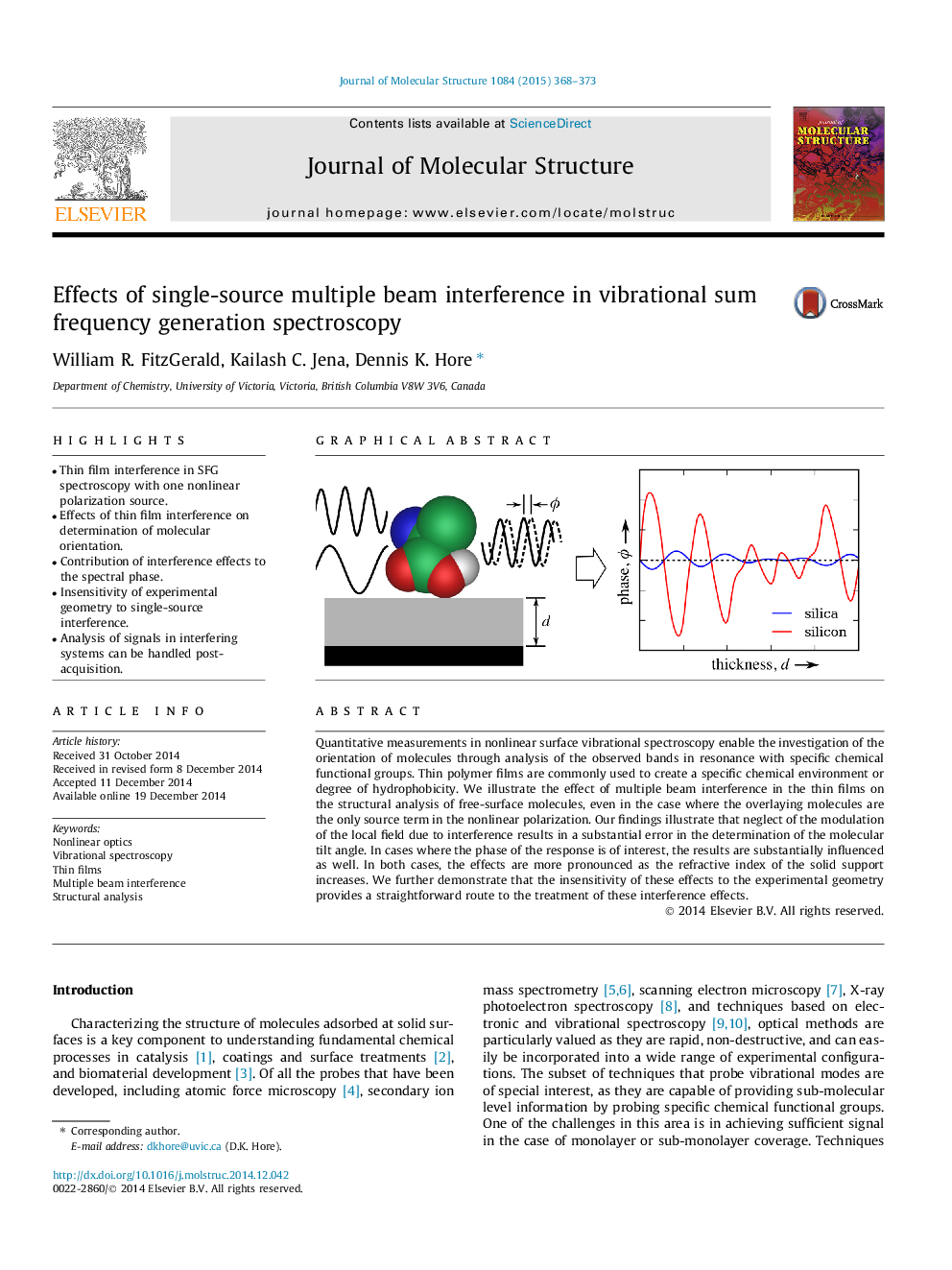| Article ID | Journal | Published Year | Pages | File Type |
|---|---|---|---|---|
| 1405416 | Journal of Molecular Structure | 2015 | 6 Pages |
•Thin film interference in SFG spectroscopy with one nonlinear polarization source.•Effects of thin film interference on determination of molecular orientation.•Contribution of interference effects to the spectral phase.•Insensitivity of experimental geometry to single-source interference.•Analysis of signals in interfering systems can be handled post-acquisition.
Quantitative measurements in nonlinear surface vibrational spectroscopy enable the investigation of the orientation of molecules through analysis of the observed bands in resonance with specific chemical functional groups. Thin polymer films are commonly used to create a specific chemical environment or degree of hydrophobicity. We illustrate the effect of multiple beam interference in the thin films on the structural analysis of free-surface molecules, even in the case where the overlaying molecules are the only source term in the nonlinear polarization. Our findings illustrate that neglect of the modulation of the local field due to interference results in a substantial error in the determination of the molecular tilt angle. In cases where the phase of the response is of interest, the results are substantially influenced as well. In both cases, the effects are more pronounced as the refractive index of the solid support increases. We further demonstrate that the insensitivity of these effects to the experimental geometry provides a straightforward route to the treatment of these interference effects.
Graphical abstractFigure optionsDownload full-size imageDownload as PowerPoint slide
